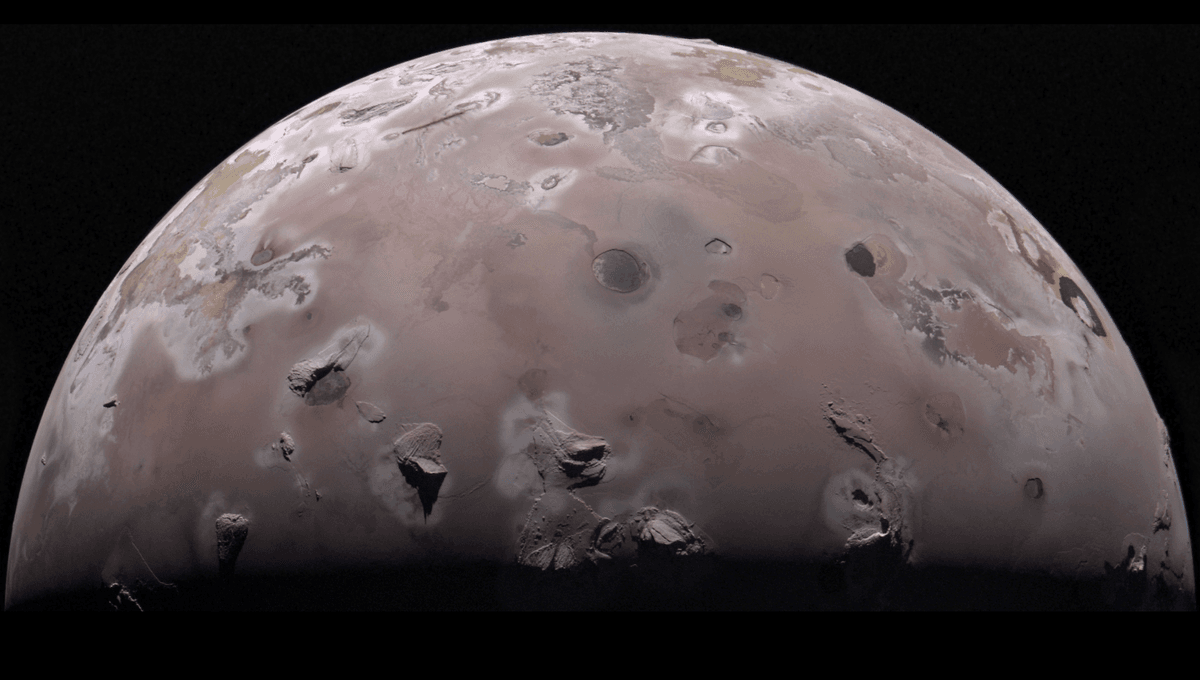
NASA’s Juno flew by the little volcanic moon Io multiple times between December 2023 and February 2024. It was the closest approach in decades and provided scientists with the best understanding yet of what powers this moon. Io is one of the other few places in the Solar System with active volcanoes spewing lava – and Jupiter is to blame.
Io is the closest largest Moon to Jupiter. It is in an elliptical orbit around the planet, going around the gas giant once every 42.5 hours, it is also in resonance with the other large moons. Io is being squished and pulled like no other world. Its volcanism was discovered thanks to the Voyager 1 spacecraft by Linda Morabito of NASA’s Jet Propulsion Laboratory back in 1979.
“Since Morabito’s discovery, planetary scientists have wondered how the volcanoes were fed from the lava underneath the surface,” Scott Bolton, Juno principal investigator from the Southwest Research Institute in San Antonio, said in a statement. “Was there a shallow ocean of white-hot magma fueling the volcanoes, or was their source more localized? We knew data from Juno’s two very close flybys could give us some insights on how this tortured moon actually worked.”
If the planet has a liquid ocean underneath, its yellow crust caked in sulfur, it will be more squishable compared to a more solid object, like a tennis ball compared to a baseball. This is what the Juno observations aimed to illuminate.
“This constant flexing creates immense energy, which literally melts portions of Io’s interior,” said Bolton. “If Io has a global magma ocean, we knew the signature of its tidal deformation would be much larger than a more rigid, mostly solid interior. Thus, depending on the results from Juno’s probing of Io’s gravity field, we would be able to tell if a global magma ocean was hiding beneath its surface.”
Juno’s data combined with previous observations of Io suggests that the volcanoes are not caused by a global magma ocean. The moon is a lot more solid than that. This has implications for icy moons like Europa and Enceladus, but also for much more distant worlds.
“Juno’s discovery that tidal forces do not always create global magma oceans does more than prompt us to rethink what we know about Io’s interior,” said lead author Ryan Park, a Juno co-investigator and supervisor of the Solar System Dynamics Group at JPL. “It has implications for our understanding of other moons, such as Enceladus and Europa, and even exoplanets and super-Earths. Our new findings provide an opportunity to rethink what we know about planetary formation and evolution.”
The study was presented at the American Geophysical Union’s annual meeting and is published in the journal Nature.
Source Link: The Heart Of The Solar System’s Most Volcanic World Is More Solid Than We Thought